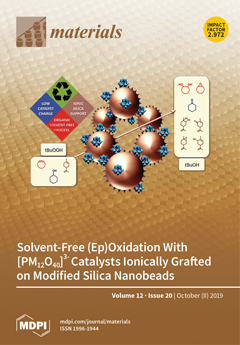Open AccessArticle
New Dental Implant with 3D Shock Absorbers and Tooth-Like Mobility—Prototype Development, Finite Element Analysis (FEA), and Mechanical Testing
by
Avram Manea, Grigore Baciut, Mihaela Baciut, Dumitru Pop, Dan Sorin Comsa, Ovidiu Buiga, Veronica Trombitas, Horatiu Colosi, Ileana Mitre, Roxana Bordea, Marius Manole, Manuela Lenghel, Simion Bran and Florin Onisor
Cited by 6 | Viewed by 4017
Abstract
Background: Once inserted and osseointegrated, dental implants become ankylosed, which makes them immobile with respect to the alveolar bone. The present paper describes the development of a new and original implant design which replicates the 3D physiological mobility of natural teeth. The first
[...] Read more.
Background: Once inserted and osseointegrated, dental implants become ankylosed, which makes them immobile with respect to the alveolar bone. The present paper describes the development of a new and original implant design which replicates the 3D physiological mobility of natural teeth. The first phase of the test followed the resistance of the implant to mechanical stress as well as the behavior of the surrounding bone. Modifications to the design were made after the first set of results. In the second stage, mechanical tests in conjunction with finite element analysis were performed to test the improved implant design. Methods: In order to test the new concept, 6 titanium alloy (Ti6Al4V) implants were produced (milling). The implants were fitted into the dynamic testing device. The initial mobility was measured for each implant as well as their mobility after several test cycles. In the second stage, 10 implants with the modified design were produced. The testing protocol included mechanical testing and finite element analysis. Results: The initial testing protocol was applied almost entirely successfully. Premature fracturing of some implants and fitting blocks occurred and the testing protocol was readjusted. The issues in the initial test helped design the final testing protocol and the new implants with improved mechanical performance. Conclusion: The new prototype proved the efficiency of the concept. The initial tests pointed out the need for design improvement and the following tests validated the concept.
Full article
►▼
Show Figures






